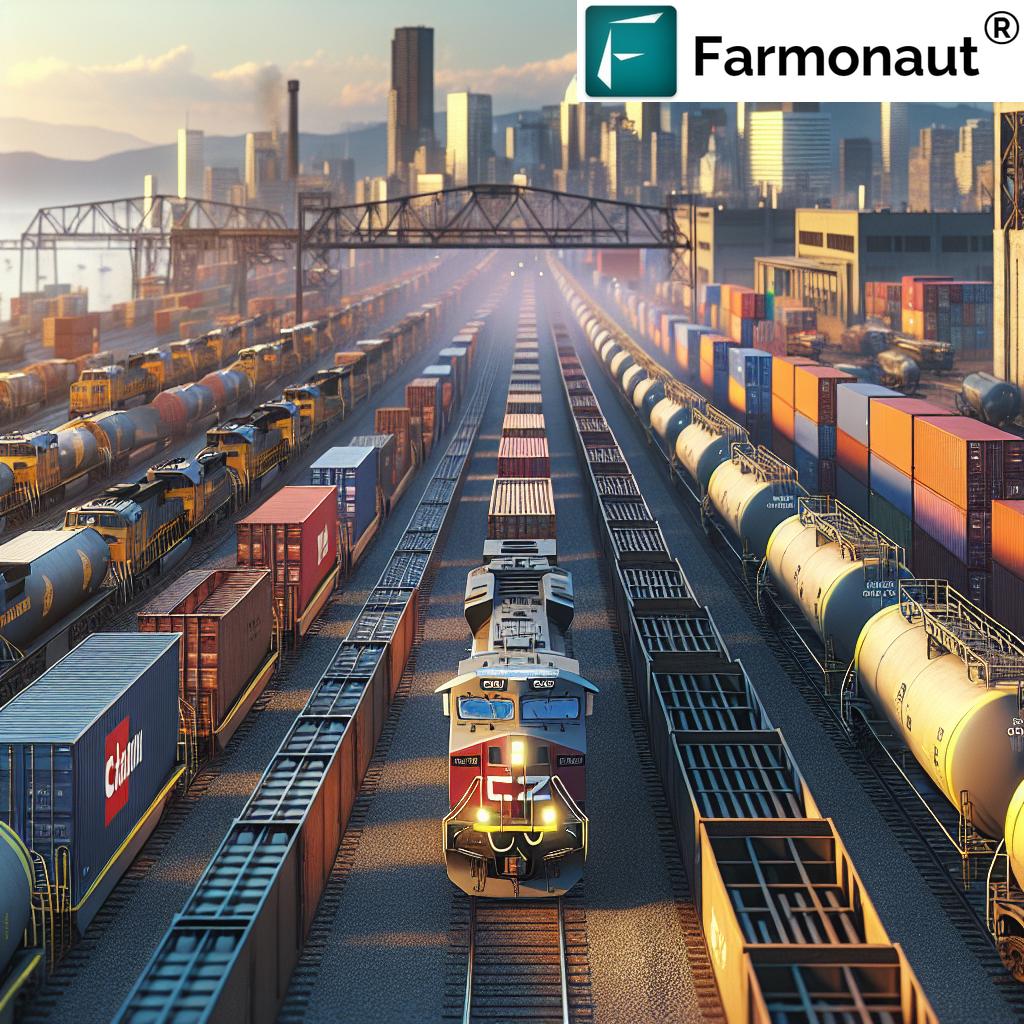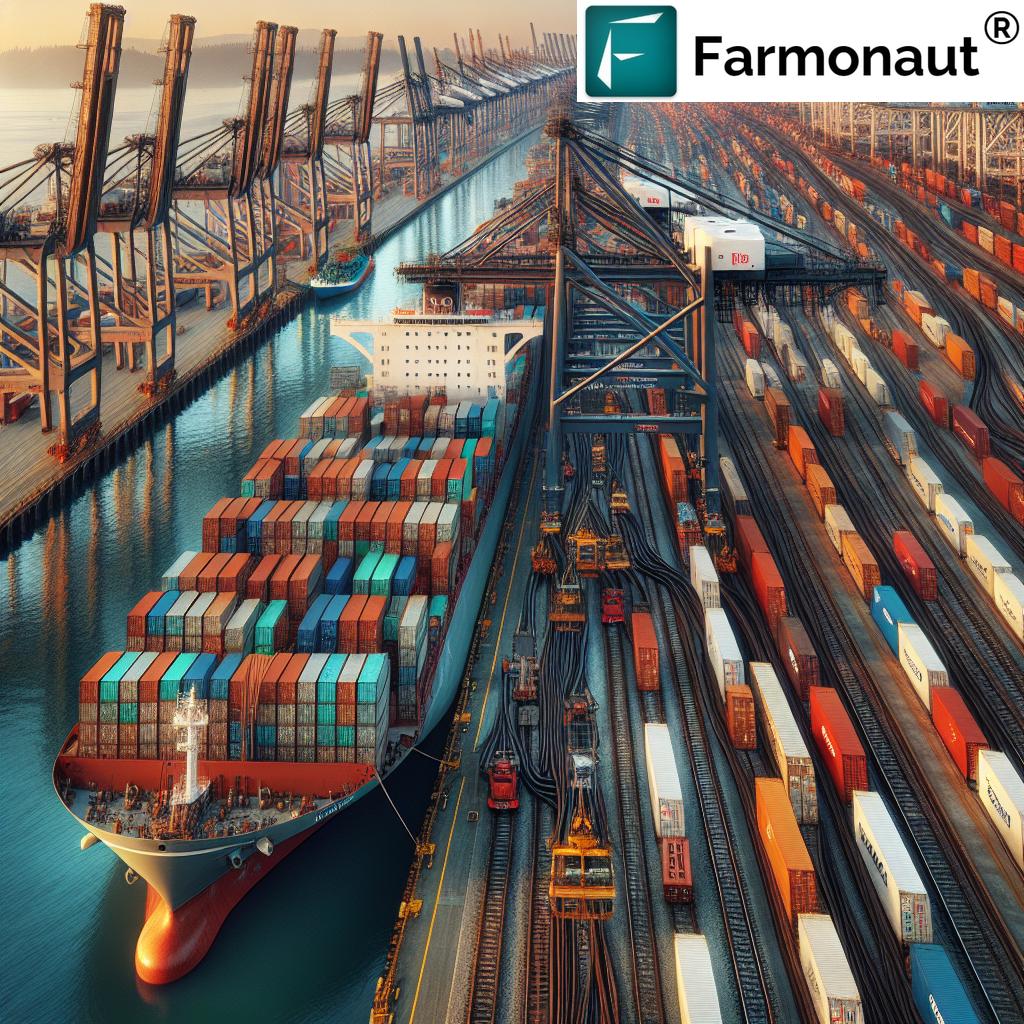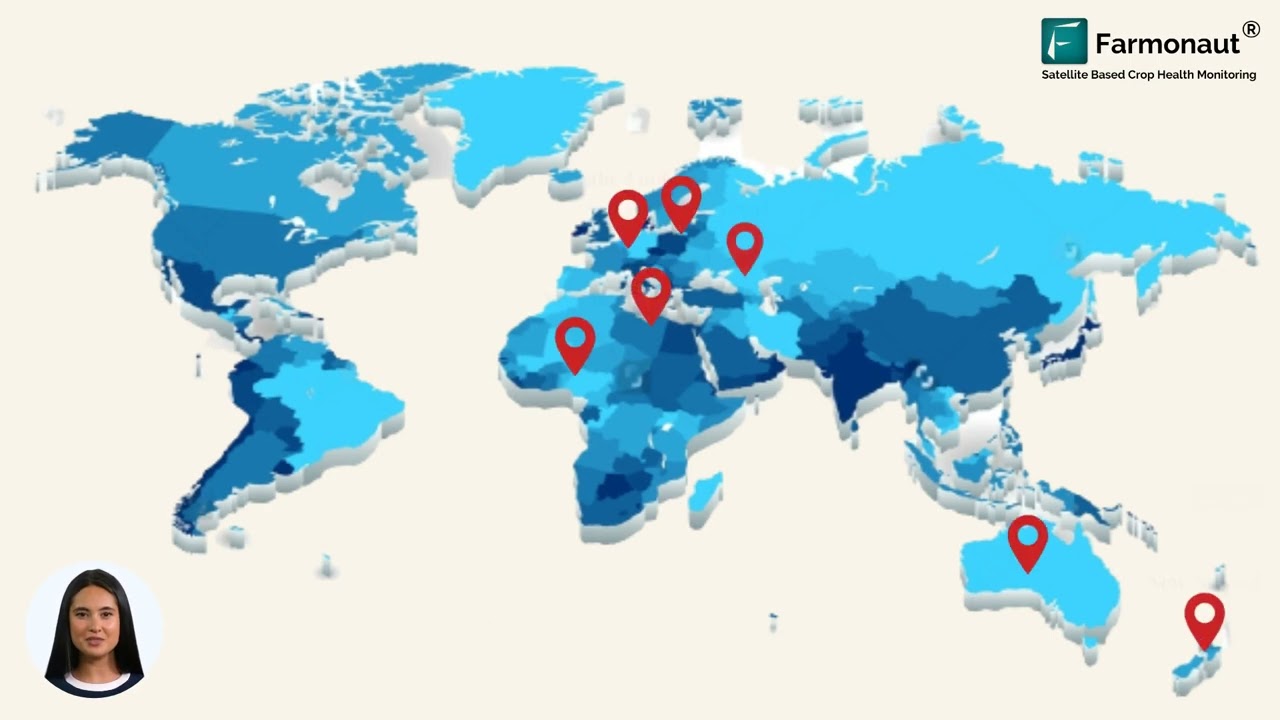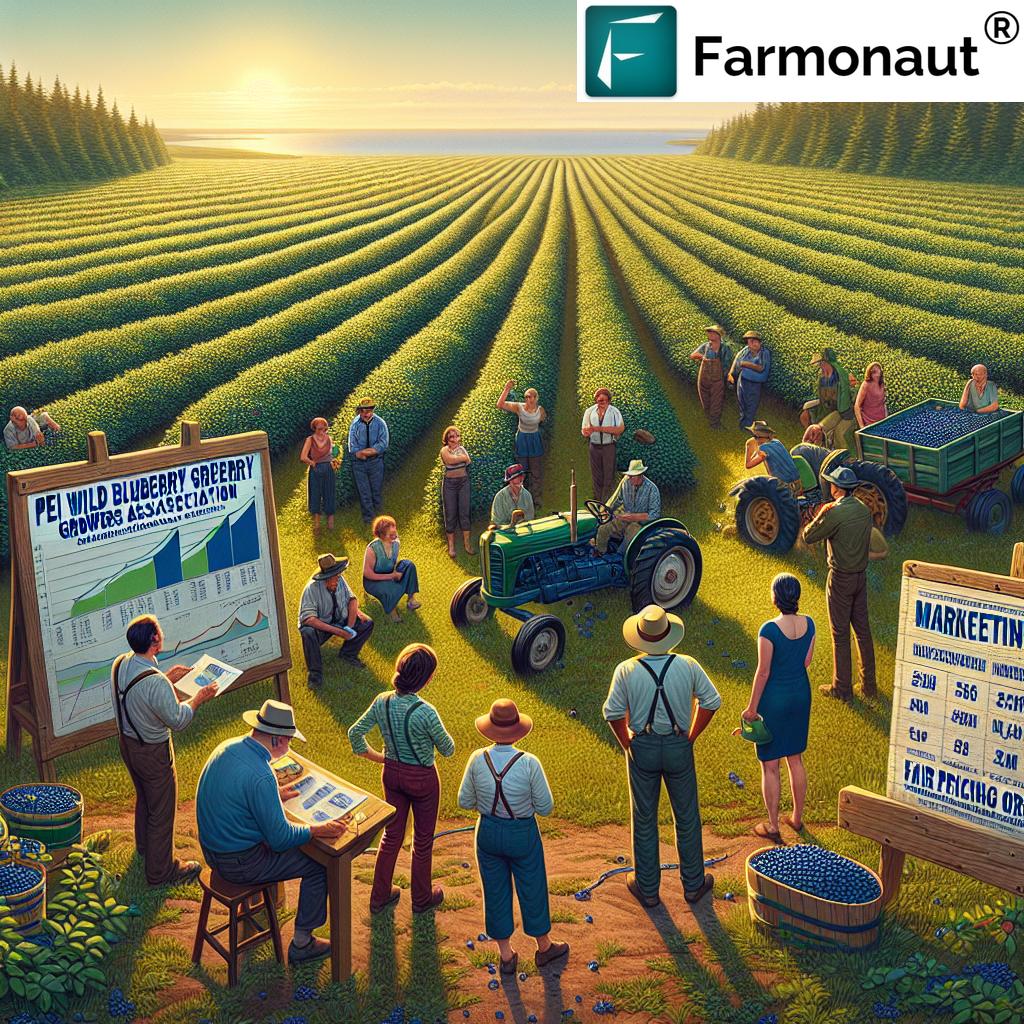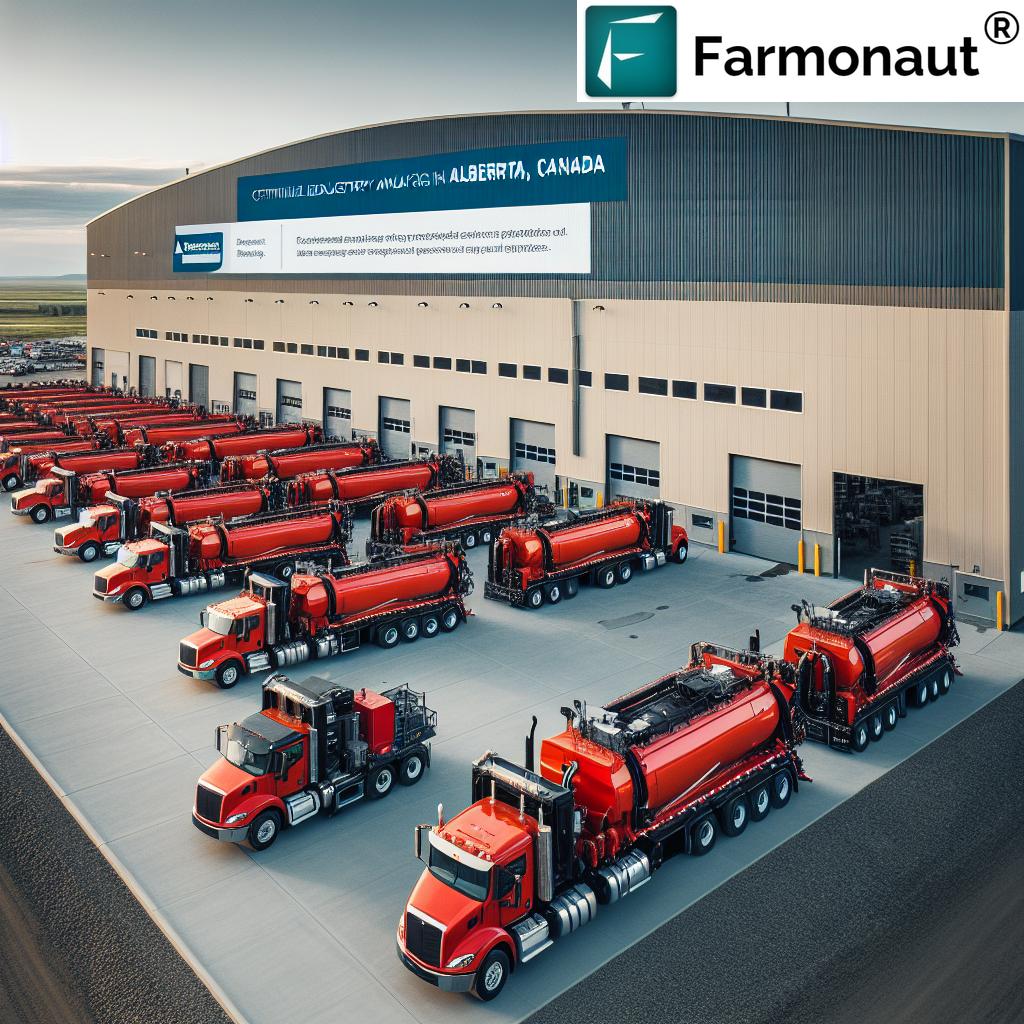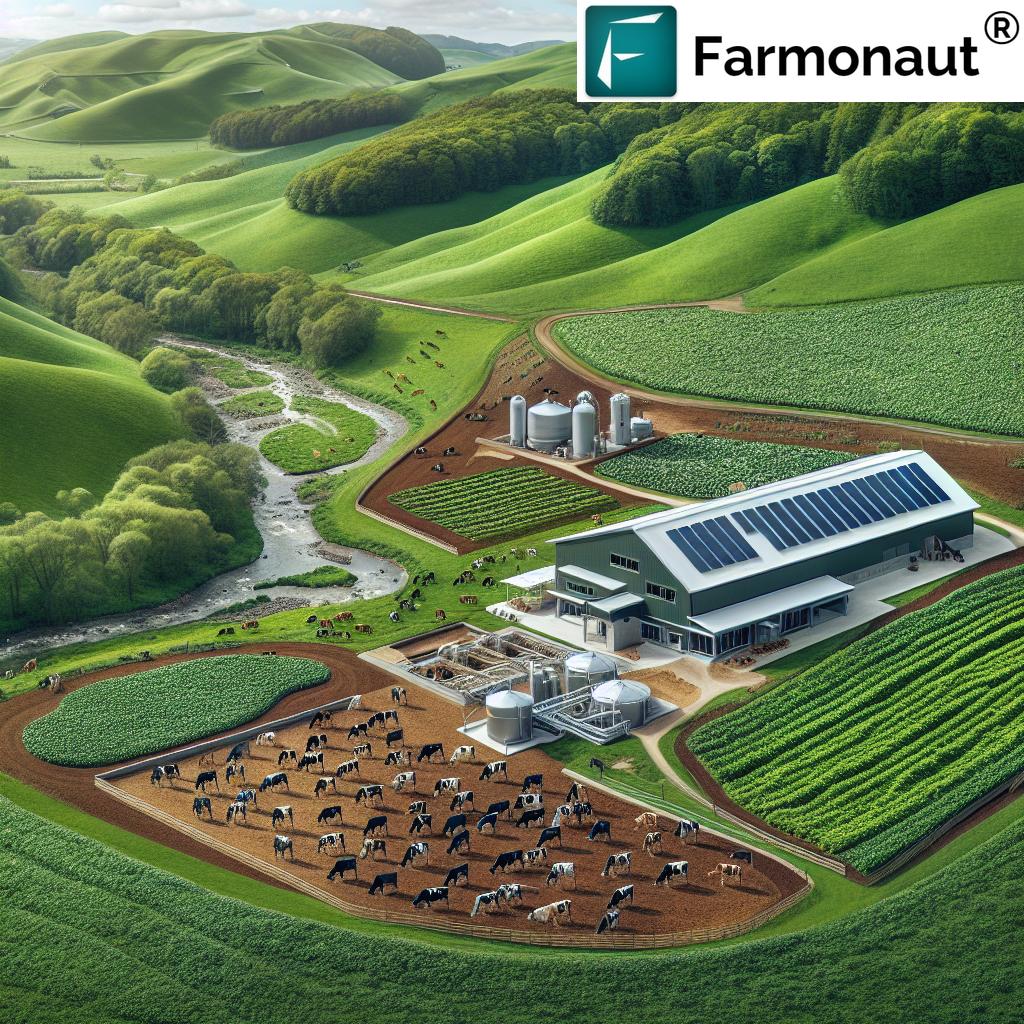Canadian Rail Industry Trends: 7 Powerful Insights on Cargo & Trade
As we analyze the Canadian rail industry in 2025, it’s clear that the landscape for cargo and trade across Canada is evolving rapidly. With shifting tariffs, changing global policies, and technology-driven operations, our nation’s railways—especially giants like Canadian National Railway and Canadian Pacific Kansas City—face both challenges and opportunities affecting Canada cargo shipments, petroleum transportation Canada, and grain and fertilizer transport.
“Canadian railways transported over 332 million tonnes of cargo in 2023, reflecting shifting trade and tariff impacts.“
1. The Resilience of Canada Cargo Shipments
In recent years, the Canadian rail industry has demonstrated remarkable resilience in the face of economic uncertainty and trade tensions. As a leading country for both the movement of raw materials and finished products, our railroads play a pivotal role in connecting Montreal, Vancouver, Toronto, and other key city hubs to global markets.
Despite the trade war precipitated by shifting tariffs between Canada, the U.S., and China, Canadian National Railway Co. reported higher profits and maintained a strong operational outlook. Leadership emphasized that, although volume impacts are not yet severe, there’s an undeniable sense of “heightened risk of recession in both Canada and the U.S.”
The heart of the recovery lies in core sectors: petroleum transportation canada, grain and fertilizer transport, and the sustained movement of bulk commodities. For our railways, these sectors serve as a buffer against volatility in more vulnerable areas such as auto loads and container shipping volumes.
- Year-over-year revenues for grain and fertilizers, petroleum and chemicals have grown
- Revenue ton miles—a key rail freight metric—rose by 1% in 2024-2025
- Contraction remains in container, auto, forest products, and minerals, mainly due to tariff pressure
This pattern highlights the importance of a diverse cargo portfolio, robust operational planning, and data-driven decision making. The Canadian National Railway and its competitors continue to monitor not only Canadian economic indicators but also the impact of global policy decisions on domestic shipment flows.
Our focus on adapting rail logistics—whether it’s optimizing train lengths, leveraging digital tracking, or balancing east-west and north-south trade flows—remains the linchpin for remaining competitive worldwide.
2. Petroleum Transportation Canada: Growth Amid Uncertainty
Petroleum remains one of the most critical segments for Canada cargo shipments. Rail consistently bridges the gap between Western Canada’s energy production and export markets in North America and globally. In fact, the Canadian National Railway noted a double-digit increase in petroleum and chemicals revenue, even as some sectors face regulatory uncertainty.
Why has petroleum transportation Canada withstood these headwinds? The answer lies in:
- Pipeline constraints and slow infrastructure approvals—often resulting in “crude by rail” being a viable alternative
- Geopolitical shifts—redefining where and how Canadian petroleum travels globally
- Resilience of demand—even with fluctuations, domestic and U.S. refineries continue to rely heavily on Canadian supply
Montreal—home to key refineries and rail yards—continues to play a strategic role in the petroleum trade. Meanwhile, uncertainty stemming from tariffs, environmental regulations, and investment delays nuanced the outlook for the remainder of 2025 and beyond.
“Petroleum shipments by Canadian rail increased by 12% in 2023, despite ongoing trade uncertainties and regulatory changes.“
3. Grain and Fertilizer Transport: Weathering Tariff Turbulence
Perhaps nowhere is the essential nature of rail more visible than in grain and fertilizer transport. As global food supply chains adjust to climate, tariffs, and demand surges, Canadian railways serve as the backbone for exporting wheat, canola, and fertilizers manufactured from minerals and chemicals.
In the first quarter, year-over-year revenue increased for this segment—despite severe winter disruptions in February. Our ability to move large volumes efficiently from prairie provinces to key ports, notably Montreal, keeps Canada competitive in world agriculture and commodities markets.
- Advanced scheduling and close coordination with shippers have helped optimize turnaround, even when weather or tariffs delay ocean freight
- Grain and fertilizers are critical for Canada’s rural economy, supporting jobs from farm to railway to port
We see rising interest in digital and satellite-powered agriculture technologies like Farmonaut, which offer real-time monitoring and advisory systems to empower farmers—helping to further harmonize railway freight trends with shifts in Canadian crop yields.
For enhanced traceability of agriculture commodities, explore the value Farmonaut’s blockchain-based traceability solution brings to the table—delivering transparency from field to freight, essential for both export credibility and domestic market confidence.
4. Container Shipping Volumes & Commercial Ocean Carrier Disruptions
Another major trend is the ongoing volatility and contraction in container shipping volumes, which is closely linked to commercial ocean carrier operations. The U.S.-China trade war and blank sailings have particularly affected trade through west coast ports such as Vancouver and U.S. Pacific terminals.
- Blank sailings—the result of commercial ocean carriers canceling departures due to lowered demand—have hit container flows, especially for east-west cross-Pacific routes.
- Revenue impacts are notable in goods such as electronics, machinery, and retail imports, reducing overall intermodal volume for Canadian railways.
- Auto manufacturing supply chains and forest products logistics are seeing shipment delays and higher costs due to shipping uncertainty.
As trade patterns with the U.S., China, and other Asia-Pacific countries shift, we are forced to rethink intermodal strategies and invest in deeper collaboration with ports and shipping partners.
Technology and logistics solutions have never been more important, especially for optimizing routing, cargo tracking, and cycle time management. Tools like Farmonaut’s fleet and resource management systems help agricultural businesses and rail partners track assets and optimize logistics in real time.
5. Forest Products, Minerals, and Chemicals Shipping: Adapting to Change
The forest products logistics and minerals and chemicals shipping sectors highlight the complex interplay of tariffs, resource cycles, and changing regulatory environments.
Weaker demand from key export countries—caused by both tariffs and falling global construction trends—led to a contraction in movement of lumber, metals, and some mineral products. Nonetheless, there are strong signals of rebounding demand for “value-added” processed forest products and specialty chemicals, particularly in domestic and U.S. markets less affected by punitive tariffs.
- Forest products now face the challenge of higher U.S. duties; adaptation in value-chain focus is key
- Minerals and chemicals shipping remains volatile, but essential for fertilizer and industrial supply chains
Rail remains the most efficient option for these bulk commodities, underscoring the role of the Canadian National Railway and Canadian Pacific Kansas City as indispensable partners for industrial supply chain stability.
6. Impact of Tariffs on Rail Cargo & The Rise of Domestic Opportunity
The continued impact of tariffs on rail cargo remains a dominant narrative across the Canadian rail industry in 2025. With no long-term trade resolution in sight, it’s critical we examine not just the drawbacks, but also the silver linings and opportunities arising from this turbulence.
- Some shippers pause or juggle production and inventory, leading to sporadic demand for freight capacity.
- “Air pockets” in container shipping volumes are likely to persist well into the latter part of this year.
- Domestic ramp-up: There is potential for higher cargo volumes within Canada in petroleum, steel, lumber, and refined chemical products, as firms pivot to take advantage of homegrown markets.
Companies and policymakers in Montreal and across the country are closely watching initiatives for “free trade within Canada,” which could enable more fluid cross-provincial shipments throughout the Canadian rail network—a significant buffer to external shocks.
These tools empower rail industry stakeholders to measure, reduce, and report emissions, ensuring compliance and driving operational efficiencies in alignment with modern trade expectations.
7. The Critical Role of Technology & Data-Driven Operations
Our competitive advantage as a nation hinges on how effectively we leverage data-driven technologies within the transportation, agriculture, and commercial supply chain sectors. Railway freight trends increasingly tie into high-precision management of fleet, assets, environmental compliance, and supply chain transparency.
Here, Farmonaut provides advanced large scale farm management technology solutions integrating satellite imagery, AI, and traceability. This digital transformation ensures not only that supply chains are more resilient, but that Canadian railways collaborate seamlessly with agriculture, logistics, and retail partners.
- Fleet optimization reduces operational costs and maximizes resource use along key rail corridors
- Satellite-based crop and soil monitoring enhances predictability of grain and fertilizer demand and routing, linking agricultural cycles with rail logistics
- Blockchain-based traceability delivers transparency and tamper-proof records for food safety, export compliance, and insurance claims
Real-time crop health analytics and emission data are rapidly becoming prerequisites for participation in global trade and environmental compliance.
Canadian Rail Cargo Trends Comparative Table
To provide a snapshot of the evolving cargo landscape for Canadian railroads, here is a comparison of key shipment categories over the last three years, highlighting estimated volumes, percentage changes, and notable tariff or policy changes:
| Year | Cargo Type | Estimated Shipment Volume (Million Tonnes) |
YoY Change (%) | Notable Tariff/Policy Change |
|---|---|---|---|---|
| 2022 | Petroleum | 56.4 | +5.1% | Pipeline constraints boost rail demand |
| 2022 | Grain | 67.2 | +1.8% | Weather-driven yield volatility |
| 2022 | Fertilizer | 22.1 | +2.2% | Moderate tariff impacts, export growth |
| 2022 | Other (Forest Products, Minerals, Chemicals) | 186.0 | +0.4% | Minor trade war effects, stable demand |
| 2023 | Petroleum | 63.2 | +12.0% | Tariffs raise U.S. demand for Canadian oil-by-rail |
| 2023 | Grain | 68.7 | +2.2% | Strong harvest, new export quotas |
| 2023 | Fertilizer | 22.7 | +2.7% | Higher nutrient prices, stable tariffs |
| 2023 | Other (Forest Products, Minerals, Chemicals) | 177.4 | -4.6% | Intro of new U.S. tariffs, demand dips |
| 2024 | Petroleum | 62.6 | -1.0% | Tariff uncertainty, pipeline projects stalled |
| 2024 | Grain | 66.1 | -3.8% | Severe winter, gradual recovery |
| 2024 | Fertilizer | 22.2 | -2.2% | Input cost fluctuation, moderate tariffs |
| 2024 | Other (Forest Products, Minerals, Chemicals) | 181.1 | +2.0% | Partial recovery, adaptation strategies |
This comparative data illustrates just how dynamic the Canadian rail industry has become in the face of increasingly complex market forces.
How Farmonaut Supports Canadian Grain & Fertilizer Transport
In both grain and fertilizer transport, Canadian National Railway and Pacific Kansas City operators depend on accurate, timely information from both the agricultural and logistics sides. As agricultural cycles, weather conditions, and market shifts dictate rail volumes, Farmonaut’s platform becomes a mission-critical enabler by offering:
- Satellite-based crop health monitoring—alerts shippers to regional yield variances and supports just-in-time rail scheduling
- AI-based farm advisory—gives farmers decision support for planting, harvesting, and logistics alignment
- Blockchain-based traceability—assures traceable, secure records for rail-transported agri-products
- Resource and fleet management tools—optimize input and output flows for both farmers and rail/road partners
- Carbon footprint tracking—provides carriers and exporters with transparent emission reporting and reduction strategies
These services are offered across Android, iOS, web apps, and API integrations—making Farmonaut accessible to every level of the agricultural supply chain, rail logistics, and shipping industry.
For Canadian agribusinesses, governments, and cooperatives:
-
Farmonaut’s crop loan and insurance satellite verification (see details at
Crop Loan and Insurance product page)
streamlines financial access and reduces risk. - Forest and plantation managers benefit from Farmonaut’s advisory and crop monitoring via the Plantation/Farm Advisory App
Farmonaut Subscription Plans
To best serve a wide range of stakeholders—from farmers to agribusiness, as well as industry professionals and governmental institutions—Farmonaut offers transparent and scalable pricing through subscription packages. Flexible pricing tiers are available based on operations size and update frequency, with options for mobile, web, and API access.
Please see our latest subscription tables below, and contact us for enterprise or custom requirements.
Frequently Asked Questions (FAQ)
What are the biggest risks to the Canadian rail industry in 2025?
The greatest risks stem from continued tariff uncertainty involving the U.S., China, and other major trading partners. These tariffs directly impact volume in container shipping, auto, forest, and mineral products. Meanwhile, domestic policy shifts and recession fears could also reduce investment and overall cargo demand.
Which cargo categories have proven most resilient?
Petroleum, grain, and fertilizers have displayed robust demand profiles even as other segments falter. These commodities are less affected by international consumer cycles and more tied to either steady domestic demand or essential production needs, such as agriculture and energy.
How are commercial ocean carrier disruptions affecting Canadian railways?
Due to trade war impacts (especially between the U.S. and China), commercial ocean carriers are increasingly “blank sailing”—canceling departures or skipping ports. This has reduced incoming and outgoing container volumes on Canadian railways, especially on the West Coast, resulting in intermodal contraction and unpredictability in logistics planning.
How is Farmonaut helping the Canadian agri-rail industry?
Farmonaut supports this sector through its satellite-based crop monitoring, AI-driven farm advisory, blockchain product traceability, fleet and resource management, and carbon footprinting tools. By providing actionable insights to stakeholders across the supply chain, Farmonaut improves operational resilience and transparency for both agriculture and its connected rail transportation.
How can I access Farmonaut’s solutions?
You can access Farmonaut via Android, iOS, and web apps, or through direct API integration. Review the detailed API guides in our developer documentation.


